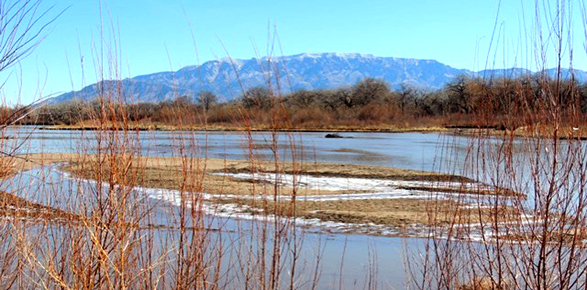
In 2002, the New Mexico Environment Department labeled the mid Rio Grande as an impaired river, i.e., the water quality did not meet the designated standards for a river. The major pollutants were identified as E.coli bacteria, oxygen depleting substances, polychlorinated bio-phenols (PCBs), and gross alpha radiation.
Federal and state agencies, county and local municipalities, and tribes began meeting. They developed the Watershed Restoration Action Strategy (WRAS) with two action strategies, one for Tijeras Creek in 2004 and one for the Albuquerque portion of the river in 2006. They have been working on these ever since as funds became available. There is also ongoing monitoring of the pollutants in ten-year cycles.
Fecal contamination occurs when the number of E.coli bacteria (used as the marker for all microbial contamination) passes a certain level. Along the Rio Grande, sources of this contamination include leaking septic tanks, farm animals, birds and an impressive 20% from dog poop.
Oxygen depleting substances disturb the needed balance in water to support life for microbes, fish, and plants. When too many nutrients such as nitrogen and phosphorus from our fertilizers get into the river, microbes increase, using up the oxygen in the water. When this happens it causes dead zones in which fish and other aquatic fauna and flora die.
PCBs were banned in the US in 1979, but these chemicals linger in high concentrations in water and sediments and continue to be highly toxic for humans, causing birth defects and neurologic diseases. Along the Rio Grande, PCB contamination is thought to have come from the industries manufacturing electrical components and oils.
Gross Alpha Radiation refers to large particles which are emitted from the decay of Uranium and Radium, most occurring naturally from soil and rocks. They do not travel far, but when they enter animal or human human bodies, they do damage.
So, what has happened since our river was labelled impaired?
Continue reading
